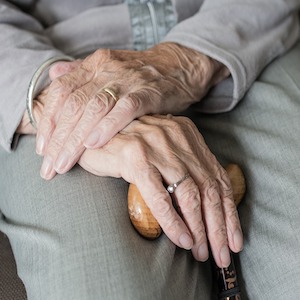Assessing frailty in urogynecology patients: a comparative analysis of the Edmonton frail scale and pelvic floor symptom severity

All claims expressed in this article are solely those of the authors and do not necessarily represent those of their affiliated organizations, or those of the publisher, the editors and the reviewers. Any product that may be evaluated in this article or claim that may be made by its manufacturer is not guaranteed or endorsed by the publisher.
Authors
This study aimed to measure frailty using the Edmonton frail scale (EFS) and examine whether frailty is associated with presenting complaints or worse pelvic floor symptom severity in older urogynecology outpatients. We conducted a cross-sectional study of new urogynecology patients aged 50 and older at 2 urban academic centers between November 2018 and January 2020. Pelvic floor symptom severity was assessed using surveys [overactive bladder validated 8-question screener (OAB-V8), pelvic floor distress inventory, and 6-item female sexual function index]. Multivariable linear and logistic regression analyses were performed to compare chief complaint and questionnaire scores by EFS score, frailty status, and EFS component. A total of 138 women were recruited, with a mean age of 65 years (standard deviation 9.3). 11.6% met the criteria for frailty. Frail women had 6.2 greater adjusted odds of endorsing urinary incontinence symptoms as their presenting complaint, and women with higher EFS scores had worse OAB-V8 scores (adjusted ß=0.04, p=0.03). Depression/sadness were associated with worse urinary and prolapse symptoms. Frailty is common in older urogynecology outpatients, especially those presenting with urinary incontinence. Individual components of the EFS associated with symptomatic pelvic floor dysfunction included depressed mood, lack of reliable help, and incontinence.
How to Cite

This work is licensed under a Creative Commons Attribution-NonCommercial 4.0 International License.
PAGEPress has chosen to apply the Creative Commons Attribution NonCommercial 4.0 International License (CC BY-NC 4.0) to all manuscripts to be published.






